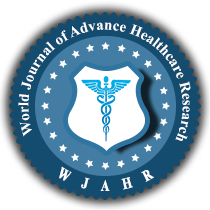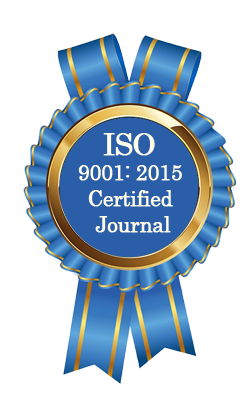| All | Since 2020 | |
| Citation | 105 | 60 |
| h-index | 4 | 4 |
| i10-index | 3 | 2 |
WJAHR Citation 
Login
News & Updation
Best Article Awards
World Journal of Advance Healthcare Research (WJAHR) is giving Best Article Award in every Issue for Best Article and Issue Certificate of Appreciation to the Authors to promote research activity of scholar.
Best Article of current issue
Download Article : Click here
Indexing
Abstract
EVALUATION OF NON-INVASIVE MARKERS OF FIBROSIS AND THEIR CORRELATION WITH THE VIRAL LOAD IN SUBJECTS WITH HEPATITIS B VIRUS IN NNEWI
Obiomah Chinwe Favour*, Amilo Grace I., Obeagu Emmanuel Ifeanyi and Vincent C. C. N.
ABSTRACT
Hepatitis B is an infectious disease of great public health importance. Nigeria is one of the countries with the highest incidence of Hepatitis B Virus (HBV) infection worldwide. However, the accessibility and affordability of HBV DNA quantification (viral load) assay which is the key laboratory test for therapy initiation, and monitoring is a challenge to HBV management. This study was designed to evaluate the non-invasive markers of fibrosis and their correlation with the viral load in subjects with hepatis B virus in Nnewi. Cross sectional study design was used with a total of 264 subjects comprising of 88 HBsAg seropositive treatment naïve subjects, 88 HBsAg seropositive subjects on antiviral therapy as case subjects and 88 age-matched apparently healthy HBsAg seronegative individuals were recruited as control subjects. Hepatitis B virus DNA assay was performed using real time PCR technique, Hepatitis C Virus assay, Human Immunodeficiency Virus testing, Gamma glutamyl transferase, Aspartate transaminase, Alanine transaminase tests were determined using spectrophotometric methods. Non-invasive markers of fibrosis - RDW-Platelet Ratio (RPR), Neutrophil to Lymphocyte ratio, Platelet to Lymphocyte ratio, GGT to Platelet ratio, AST-Platelet Ratio index and AST-ALT Ratio were calculated. The noninvasive markers of fibrosis –GGT to Platelet ratio, AST to platelet ratio and AST to ALT ratio were significantly higher in test subjects (0.06±0.11; 0.44±0.87; 1.49±0.86) compared with control subjects (0.02±0.01;0.11± 0.69;0.89±0.59 respectively, p
[Full Text Article] [Download Certificate]
